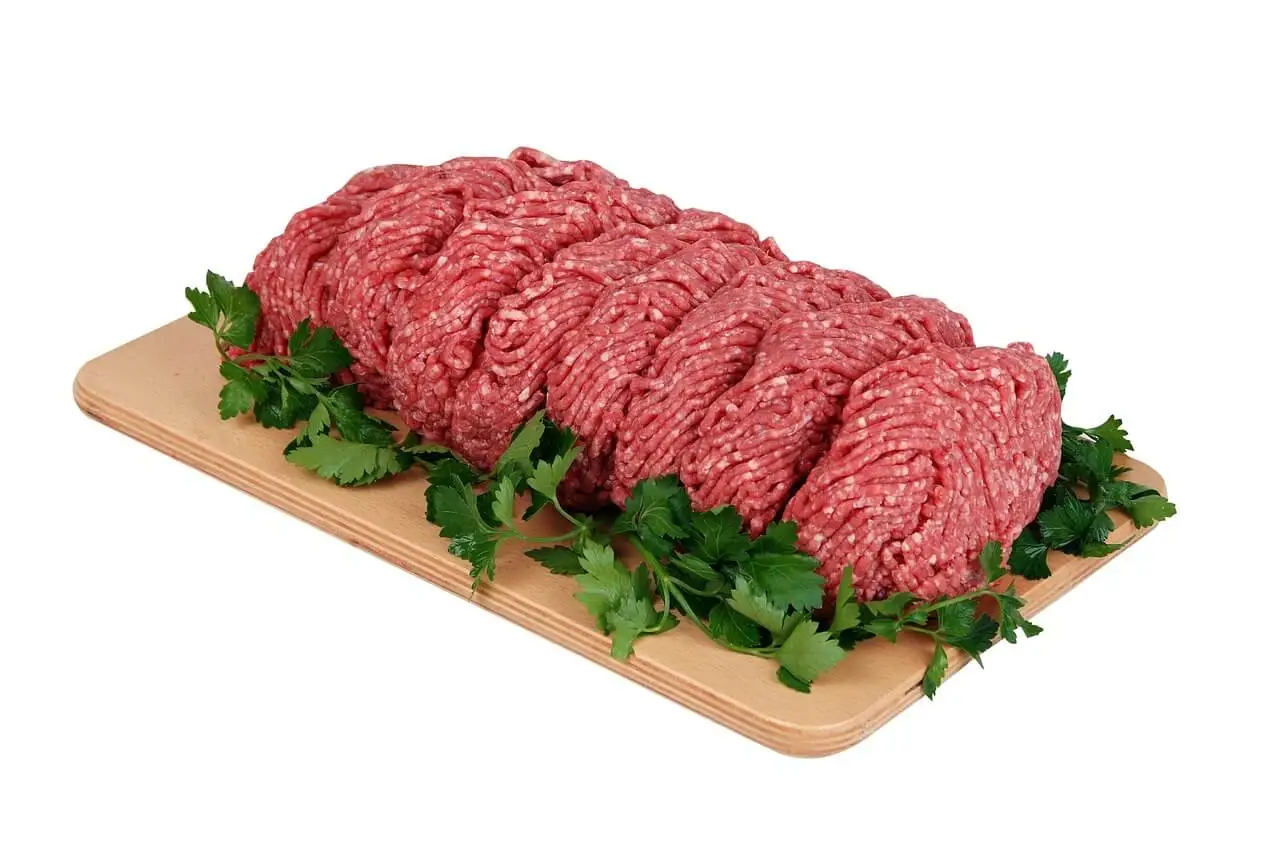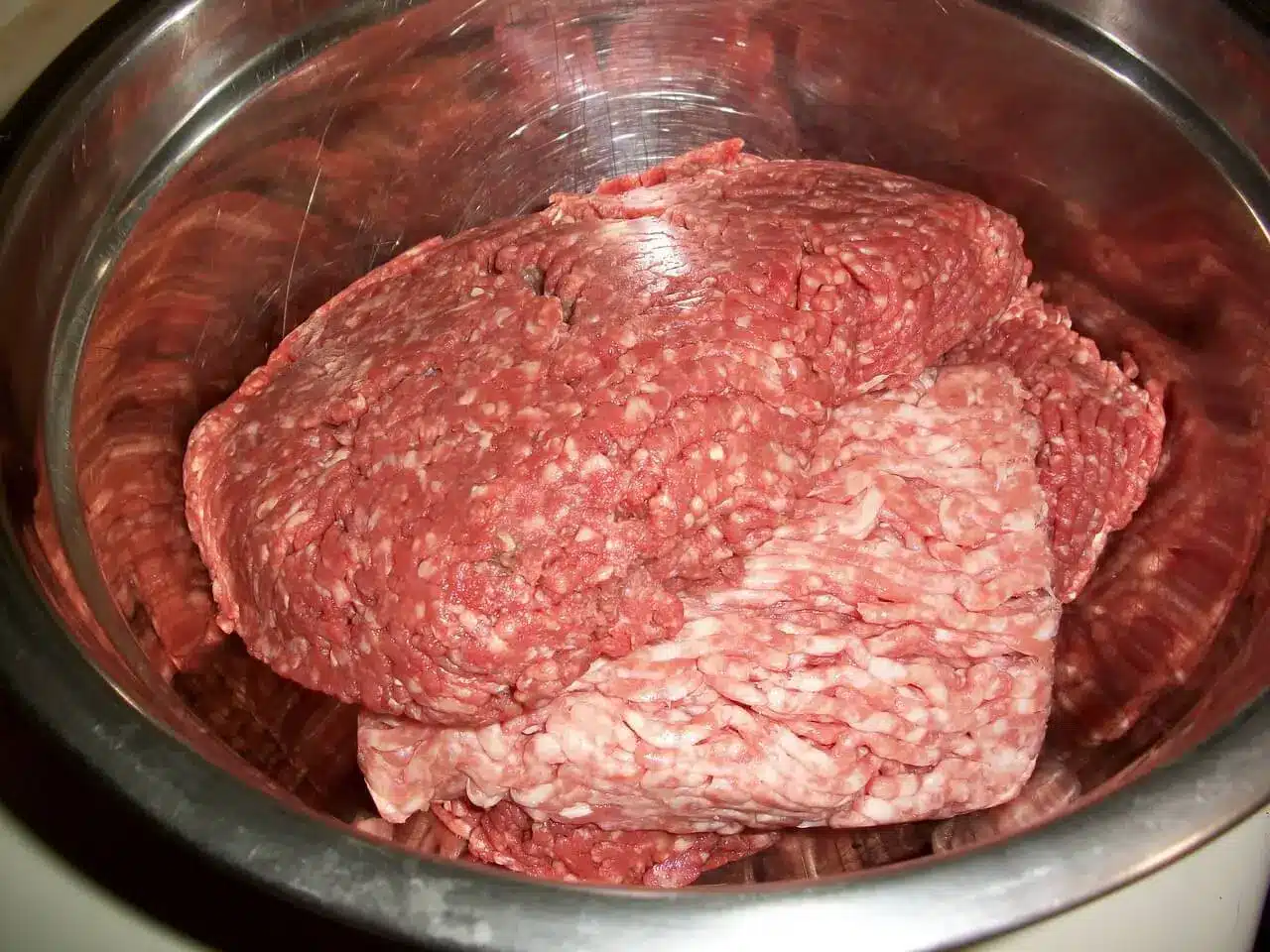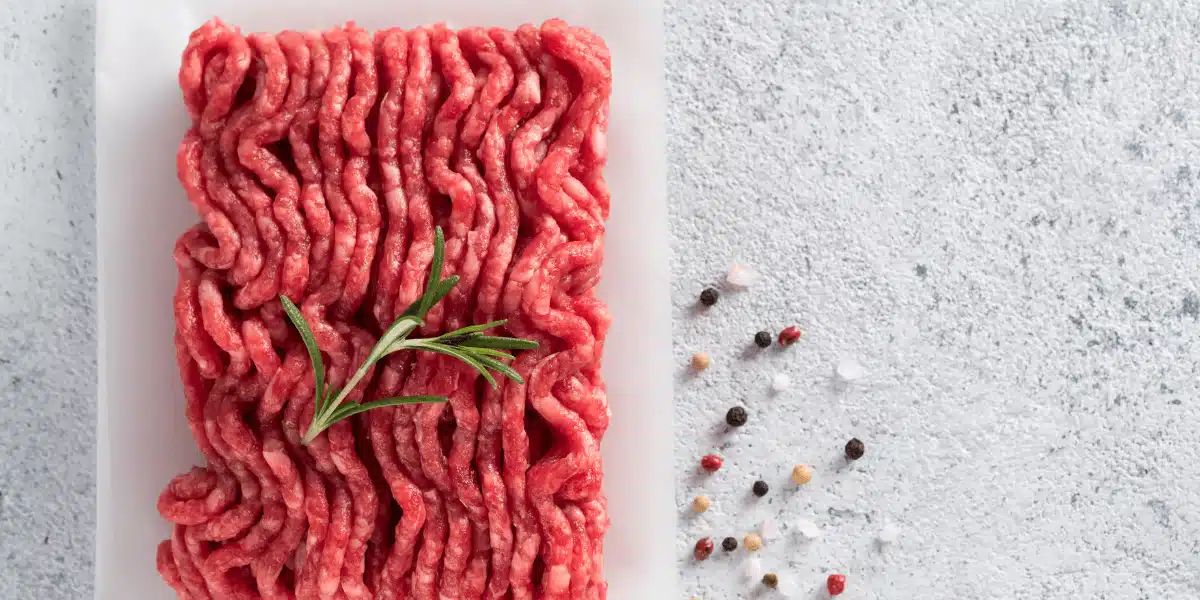Understanding Ground Beef Preparation
Introduction
Ground beef is a common choice in kitchens. People love it for its versatility and low cost. But there’s a big question: Should you rinse ground beef after cooking? This has led to many discussions. Knowing how to handle and cook ground beef is key. It affects the taste and safety of your food.
Let’s start with what ground beef is. It’s beef minced in a grinder. You find it in many meals, like burgers and casseroles. Its popularity brings up questions about how to prepare it. One big debate is about rinsing it after cooking. Some say it’s needed, others don’t agree.
The debate is about health and taste. Some think rinsing cuts down fat, making the beef healthier. Others say it takes away flavor, which is important for a good meal.
How you cook ground beef also matters. Different ways of cooking change its texture and taste. This makes the choice to rinse or not even more important. How rinsing affects the beef’s quality is a big topic among cooks and experts.
In short, ground beef is a flexible and common food. But how to prepare it, especially about rinsing, is often debated. This introduction looks at these issues. We’ll explore why people debate this and what rinsing does to the beef’s healthiness and taste. It’s important to understand these things for anyone cooking with ground beef.
The Debate: To Rinse or Not to Rinse Ground Beef

Is it good to rinse ground beef after cooking? This question causes a lot of discussion. Cooks everywhere are talking about it. They want to know if rinsing helps or harms the beef.
Some cooks stand firm on rinsing. They say it’s better for health. Their main point is that rinsing cuts down fat. Less fat often means a healthier dish. People who want to eat less fat like this idea.
Others say no to rinsing. They care about taste. They believe rinsing removes good flavors. These flavors make the beef taste better. For them, flavor is most important. They feel rinsing ruins the taste.
Safety is another big point. Rinsing cooked beef could spread germs. This is risky in the kitchen. Keeping cooking areas germ-free is important. So, safety adds to the debate.
Chefs and food safety experts also weigh in. They offer different opinions. They talk about the best ways to handle beef. Their advice can guide you in making a choice.
The online culinary world is divided over the practice of rinsing ground beef. While some argue for its benefits, others strongly advise against it. Culinary experts, including those from Better Homes & Gardens, emphasize that rinsing cooked ground beef can wash away much of its flavor, a key component of its culinary appeal. This section delves into the perspectives from various culinary professionals and their recommendations.
In short, the debate on rinsing ground beef is lively. It has two main sides. One side focuses on health and cutting fat. The other side cares about keeping the beef flavorful. Safety is also a concern. This section covers all these points. It helps you see the different opinions. This way, you can choose wisely when cooking ground beef.
The Science Behind Cooking Ground Beef
Ground Beef Composition
Ground beef is simple. It’s beef cut into small pieces. A machine called a meat grinder does this. The beef used can be from different parts of the cow. This includes parts like the chuck, round, or sirloin.
The type of beef part used changes the taste and fat. For example, chuck is juicier and has more fat. Sirloin is leaner but less juicy. The choice of beef part affects your dish.
Ground beef is popular in many recipes. It’s easy to cook and mix with other ingredients. This makes it a favorite in kitchens. It’s good for burgers, meatloaf, and more.
In short, ground beef is chopped-up beef. It can come from various cow parts. Each part gives a different flavor and fat level. Knowing this helps you pick the right beef for your meals.
Cooking Ground Beef: A Chemical Change
When you cook ground beef, it changes. Heat affects the proteins and fats in the beef. This change is not just physical. It’s also chemical. The beef’s flavor and texture transform during cooking.
Fat’s Role in Flavor and Texture
Fat in ground beef is important. It gives flavor and makes the beef juicy. When you cook the beef, fat melts. This process releases flavors. These flavors are key to the beef’s taste.
Rinse Ground Beef Cooking: Impact on Quality
Rinsing cooked ground beef can affect its quality. If you rinse, you might remove some fat. This can change the flavor. Less fat means less juiciness and taste. It’s important to think about this when deciding to rinse or not.
Cooking Methods and Their Effects
Grilling Ground Beef
Grilling is a popular method. It adds a smoky flavor. When you grill, fat drips off. This makes the beef less fatty. Grilled beef is often juicier and has a unique taste.
Frying Ground Beef
Frying is common for burgers and tacos. It cooks the beef quickly. Frying in oil can add extra fat. But it also creates a crispy texture. The beef gets a rich flavor from frying.
Boiling Ground Beef
Boiling is less common. It’s used in dishes like soups. Boiling makes the beef softer. It can also reduce fat. But, boiling might make the beef less flavorful than grilling or frying.
Baking Ground Beef
Baking is good for meatloaf or casseroles. It cooks the beef evenly. Baking can keep the beef moist. It’s a healthier option as it uses less oil.
Health and Nutritional Considerations in Ground Beef Cooking
Nutritional Content of Ground Beef
Ground beef is rich in nutrients. It has protein, iron, and B vitamins. These are good for health. But, ground beef also has fat. The amount of fat depends on the beef type.
Rinse Ground Beef Cooking: Effects on Nutrition
When you think about rinsing ground beef, consider nutrition. Rinsing might remove some fat. This can lower the calorie count. But, it might also wash away nutrients. This is important to remember for a balanced diet.
Balancing Health with Flavor
Finding a balance is key. You want your beef to be healthy and tasty. Leaner beef has less fat. But, it might not be as flavorful as fattier beef. Choose based on your health goals and taste preferences.
Cooking Methods and Nutritional Impact
How you cook ground beef affects its nutrition. For example, grilling might keep more nutrients than boiling. The cooking method can change the beef’s health benefits.
In summary, when cooking ground beef, think about health and nutrition. The type of beef and how you cook it matters. Also, consider the effects of rinsing on nutrition. This knowledge helps you make healthier choices in your cooking.
FAQs on Ground Beef Preparation

1. Is it necessary to rinse ground beef after cooking?
No, it’s not necessary to rinse ground beef after cooking. Rinsing can remove some of the flavors. These flavors come from the beef’s natural juices and fats. When you rinse, you might wash these away. This can make the beef less tasty.
Experts say rinsing isn’t needed for safety either. Cooking the beef properly kills harmful bacteria. So, rinsing for safety isn’t required. It’s better to focus on cooking the beef well.
2. Does rinsing ground beef make it healthier?
Rinsing ground beef might remove some fat. This could make it a bit healthier. But, it’s not the best way to reduce fat. Rinsing can also wash away good flavors and juices.
A better way to eat healthier is to choose leaner beef. Leaner beef has less fat from the start. This means you don’t need to rinse it to reduce fat. You get healthier beef without losing flavor.
3. What are the best ways to cook ground beef?
The best ways depend on what you’re making. For burgers or meatballs, frying or grilling is good. These methods add a nice flavor. For dishes like spaghetti sauce or chili, cooking in a pot or pan works well.
Remember, the key is to cook the beef thoroughly. This means cooking it until there’s no pink left. This makes sure the beef is safe to eat. It also keeps it juicy and flavorful.
4. How can I reduce the fat in ground beef without rinsing?
To reduce fat, try a few things. First, choose leaner beef. This has less fat to start with. Another way is to drain the fat after cooking. You can do this by putting the beef in a strainer.
When you drain the fat, you keep the flavor. This is better than rinsing. Draining gets rid of extra fat without washing away the tasty juices. This way, you get healthier beef that still tastes good.
Best Practices in Handling Ground Beef: Ensuring Safety and Quality
Choosing the Right Ground Beef
When buying ground beef, look at the labels. They tell you about fat content. Choose leaner beef for less fat. Or, pick regular beef for more flavor. It depends on your recipe and health goals.
Storing Ground Beef Properly
Store ground beef in the fridge or freezer. In the fridge, use it within 1-2 days. In the freezer, it can last for months. Keep it in airtight packaging. This helps prevent freezer burn and keeps it fresh.
Rinse Ground Beef Cooking: Handling Before Cooking
Before cooking, handle beef with clean hands. Use clean utensils and surfaces too. This prevents germs from spreading. It’s important for kitchen safety.
Cooking Ground Beef Safely
Cook ground beef until it’s no longer pink. Use a thermometer to check. It should reach 160°F (71°C). This temperature kills harmful bacteria. Make sure to cook it evenly.
Draining Fat from Ground Beef
After cooking, you might see fat in the pan. Drain this fat. But don’t rinse the beef. Draining removes extra fat without losing flavor. This is a better choice than rinsing.
In summary, handling ground beef right is important. Choose the type based on your needs. Store it safely. Keep everything clean when handling it. Cook it well to kill bacteria. And drain fat instead of rinsing. These steps help you make safe and tasty beef dishes.
Alternatives to Rinsing Ground Beef: Healthier Cooking Options
Choosing Leaner Ground Beef
One way to reduce fat is to buy leaner beef. Lean beef has less fat before cooking. This means you don’t need to rinse it to remove fat. It’s a healthier option from the start.
Draining Excess Fat After Cooking
After cooking, you can drain the fat. Put the cooked beef in a strainer. Let the fat drip away. This method reduces fat without losing flavor. It’s better than rinsing.
Using Paper Towels to Absorb Fat
Another method is using paper towels. After cooking, put the beef on paper towels. They absorb extra fat. This is a simple way to reduce fat. And it keeps the beef tasty.
Rinse Ground Beef Cooking: Cooking Techniques to Minimize Fat
Some cooking methods reduce fat. For example, grilling lets fat drip away. Stir-frying in a non-stick pan needs less oil. These methods cook the beef well. They also keep the fat low.
For those concerned about fat content, there are better alternatives than rinsing. This section suggests methods like draining excess grease and choosing leaner ground beef options, as recommended by culinary experts like those at Taste of Home.
Conclusion:
Summarizing Key Points
We’ve looked at many ideas about ground beef. Rinsing it is not the best choice. It can take away flavor. And it’s not needed for safety. Cooking beef well is what makes it safe.
Choosing Healthier Options
For a healthier meal, pick leaner beef. Or, drain the fat after cooking. These choices reduce fat. They also keep the beef tasty. This is better than rinsing.
Balancing Flavor and Health
Remember, flavor is important too. You want your beef to be delicious. So, choose cooking methods that keep the taste. Grilling or stir-frying are good options. They cook the beef well and keep it flavorful.
In summary, think about how you handle ground beef. Avoid rinsing. Choose healthier options. And cook it in ways that keep it tasty. These steps will help you make good beef dishes. They are safe, healthy, and delicious.

